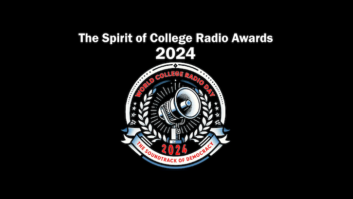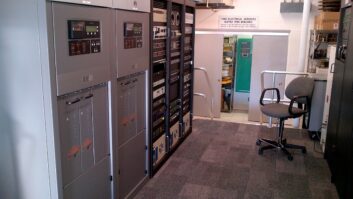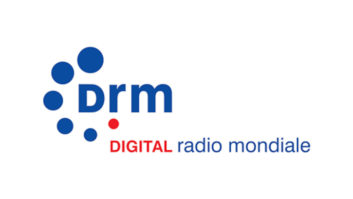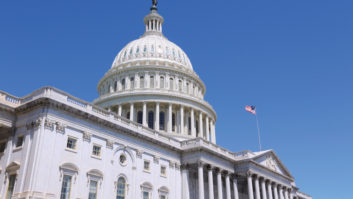The January Portable People Meter results from Nielsen show overall growth in measured radio listenership due to a much-awaited methodology change. That’s according to an industry study.
Nielsen changed the time qualifier for a station to get credit for an average quarter hour (AQH) of listening from five to three minutes and this January’s PPM book is the first to reflect the change. An Active Audio Group study found that listeners 12 and older saw a 16% average quarter-hour listening increase from January 2024’s data to this past January.
[Related: “Bouvard Weighs in on Nielsen AQH Change”]
In a blog post, Pierre Bouvard, the chief insights officer of the Active Audio Group at Cumulus Media/Westwood One, said that 23% of Nielsen PPM listening occasions were three or four minutes long. Under the previous listening qualifier rule, none of those tune-ins would have received ratings credit. As a result, the study found overall audience growth, including in younger demographics.
“Total U.S. AM/FM radio listening is up 3 percent,” Bouvard wrote.

Bouvard said the new ratings data “provides a significantly more comprehensive and realistic definition of AM/FM radio’s audience and their listening behavior.” He cited analysis conducted by Scott Ankenstein, Westwood One’s VP of research, who reviewed the January PPMs. The 47 PPM markets comprise about a third of the total U.S. population.
The results of the methodology change are across-the-board good news for the industry, according to Bouvard. We reported on the methodology change previously. While it gave some observers in the industry hope, others felt it was a “magic trick” that might make stations feel better but not necessarily provide relief for ailing ad revenue.
Year-to-year changes
The Active Audio analysis showed that, compared to last January, this year saw double-digit AQH growth for listenership across all dayparts for persons 12 and older and in the 25—54 demographic. The analysis showed weekends and drive time experiencing the greatest increases.
Bouvard said that’s due to those times having the highest proportion of in-car listening, where shorter listening instances are more common. This could include running errands, shopping or dropping kids off at school.
“These three- and four-minute occasions of listening are now being credited,” Bouvard wrote.

Across PPM-measured markets, the analysis also showed that most AQH shares by format remained stable, including adult contemporary and urban. The study felt a slight uptick in news/talk AQH was attributable to a heavier news cycle rather than the PPM methodology enhancement.
The study also highlighted younger audience growth. It showed the age 65-and-older demo as the only one where audience composition was reduced following the methodology change.

Nationwide, Ankenstein also conducted a national AQH study using January 2025 PPM market data and existing diary markets from last year. It concluded that, overall, 18–49 AQH listening grew by two percent, while AQH listening among persons 25–54 grew by three percent.
In October 2024, PPM markets represented 36% of total 25–54 U.S. AM/FM radio listening. In January 2025, the study showed PPM markets generated 38% of total U.S. listening among persons 25-54. The implication here is that network radio advertisers, who often assess the proportion of listening occurring in large PPM markets, may find the higher percentage more attractive.
Key study takeaways
The study identified four major implications of PPM listening increases:

- Radio will continue to widen its ratings lead over TV. “Based on TV and AM/FM radio audience forecasts, 2025 will see AM/FM radio overtake TV in the all-important 25–54 demographic and widen its ratings lead over TV among 18–49s,” Bouvard wrote.
- 2024 media plans will overachieve. “For total U.S. media plans using Nielsen’s Nationwide survey, deliveries will grow by low single digits,” Bouvard wrote. The study said to expect increases in audience deliveries based on prior year schedules. Bouvard said differences will result due to the mix of diary versus PPM market composition in network lineups.
- AM/FM radio will experience reach growth in advertising schedules. “With PPM now reporting higher AM/FM radio reach levels, campaign reach will experience growth,” Bouvard wrote.
- AM/FM radio ads will become more effective as stations increase the number of commercial breaks with shorter durations. Bouvard felt that this data will lay the groundwork for stations to introduce more frequent, shorter ad breaks. Currently, many stations schedule two commercial breaks around :15 and :45 minutes after the hour, designed to maximize five-minute listening durations. “With a three-minute quarter-hour qualification, stations can create more breaks of shorter duration. This will significantly benefit advertisers,” he wrote.
Comment on this or any article. Email [email protected].







